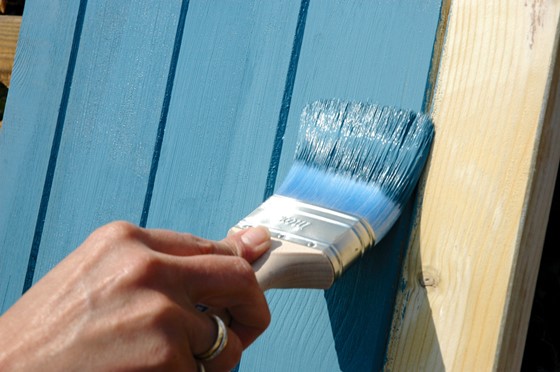Wooden cladding has long been revered for its natural charm, offering a warm and inviting aesthetic to buildings while providing structural integrity. However, to ensure its longevity and maintain its allure, the application of wooden cladding paint becomes essential. Beyond mere visual enhancement, wooden cladding paint serves as a protective shield, safeguarding structures against the elements while elevating their aesthetic appeal. In this article, we explore the significance of wooden cladding paint, its benefits, and considerations for optimal application.
Protecting Against Nature’s Wrath
Wooden cladding is exposed to the full force of nature, enduring rain, snow, sunlight, and fluctuating temperatures. Without adequate protection, these elements can wreak havoc on the wood, leading to rot, decay, and unsightly damage. Here’s where wooden cladding paint comes to the rescue:
- Weather Resistance: A properly applied coat of paint acts as a barrier against moisture, preventing water from seeping into the wood and causing swelling or warping.
- UV Protection: Paint shields the wood from harmful UV radiation, which can cause fading and deterioration over time, ensuring that the cladding retains its vibrancy and luster.
- Mold and Mildew Prevention: In humid environments, wooden cladding is susceptible to mold and mildew growth. Paint inhibits microbial proliferation, preserving the integrity of the wood and maintaining a clean, healthy environment.
Elevating Aesthetics and Design
While functionality is paramount, the visual impact of wooden cladding paint should not be overlooked. Here are some ways in which paint enhances the aesthetic appeal of structures:
- Color Palette: Wooden cladding paint offers a vast array of colors and finishes, allowing architects and designers to unleash their creativity and tailor the exterior facade to suit the building’s style and surroundings.
- Texture and Depth: Different paint finishes, from matte to glossy, imbue the cladding with texture and depth, adding visual interest and dimension to the building’s exterior.
- Architectural Harmony: Painted wooden cladding can seamlessly blend with other architectural elements, such as stone, brick, or metal, creating a harmonious composition that enhances the overall design aesthetic.
Preserving Sustainability and Longevity
In an era of heightened environmental consciousness, the preservation of natural resources and sustainable practices is paramount. Wooden cladding paint contributes to sustainability in several ways:
- Longevity and Durability: By protecting wooden cladding from premature deterioration, paint extends its lifespan, reducing the need for frequent replacements and minimizing waste.
- Cost-Effective Maintenance: While initial paint application requires investment, the long-term cost savings from reduced maintenance and repairs make it a financially prudent choice for building owners.
- Environmental Impact: Opting for eco-friendly paint formulations minimizes the environmental footprint, ensuring that structures are not only visually appealing but also environmentally responsible.
Considerations for Optimal Application
To reap the full benefits of wooden cladding paint, careful consideration must be given to the following factors:
- Surface Preparation: Thorough cleaning, sanding, and priming of the wood surface are essential to ensure proper adhesion and longevity of the paint finish.
- Choice of Paint: Selecting a high-quality exterior paint specifically formulated for wooden surfaces is critical for achieving optimal performance and durability.
- Maintenance Regimen: Regular inspection and maintenance of painted wooden cladding are necessary to address any signs of wear, damage, or deterioration promptly.
Summary:
By marrying functionality with design, paint transforms wooden cladding into a timeless architectural element that not only withstands the test of time but also elevates the built environment with its enduring charm. As architects, designers, and building owners continue to embrace the fusion of beauty and functionality, wooden cladding paint remains an indispensable tool in the quest for sustainable, visually captivating structures.
